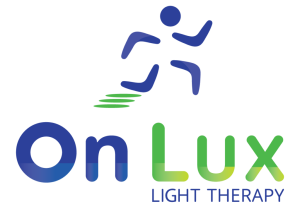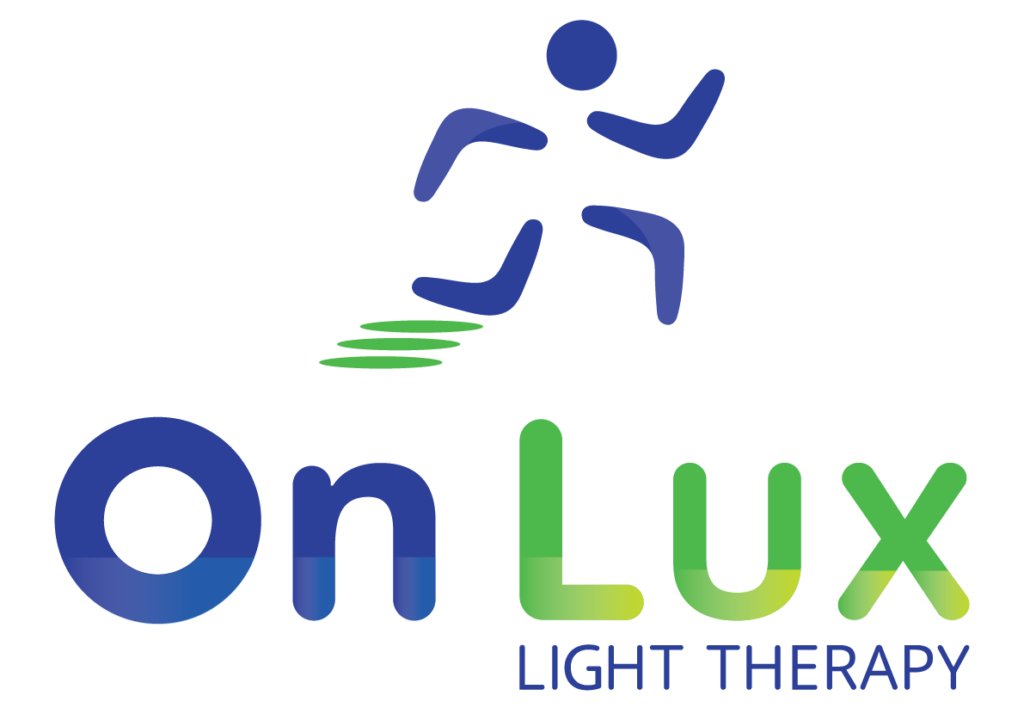General PhotoBioModulation Studies
Although these studies are not specific to OnLux, PhotoBioModulation efficacy is supported by years of scientific research and studies.
Joint Pain & Inflammation
This study finds that pain and disability associated with knee osteoarthritis is significantly improved when using light therapy. No adverse events were reported.
324 patient study documenting that patients treated with light therapy achieved significant improvement from pain associated with medial and lateral epicondylitis (tennis and golfers elbow). Total relief of the pain with consequently improved functional ability was achieved in 82% of acute and 66% of chronic cases.
The most important part of our study is that we estimated that almost half of the total societal cost of opioids ($500 million annually) use in persons with symptomatic knee osteoarthritis is used to pay for lost work productivity and criminal justice and other consequences of the diversion of prescribed opiates to unlawful use, concludes Dr. Losina.
For over forty years, light therapy and LED (light emitting diode) therapy (also known as photobiomodulation) has been shown to reduce inflammation and edema, induce analgesia, and promote healing in a range of musculoskeletal pathologies.
This report shows that low level light therapy reduced pain in acute neck pain and for up to 22 weeks in patients with chronic neck pain.
A Three-Arm Randomized Clinical Trial 45 patient study on effects light therapy has on pain and function following primary total knee arthroplasty. Patients using light therapy experienced less pain, swelling, used less opioids and had superior functionality scores
In a 40 patient, double-blind, placebo-controlled trial, the Infrared wrap clearly demonstrated that it is easy to use, safe and effective, and reduced chronic back pain by 50% over six weeks.
American College of Physicians Guidelines include a “strong recommendation” for Light Therapy as a non-invasive Treatments for Acute, Subacute & Chronic Low Back Pain. Clinical outcomes evaluated included reduction or elimination of low back pain, improvement in back-specific and overall function, improvement in health-related quality of life, and reduction in work disability and return to work.
90 patient study showing that patients treated with Light Therapy achieved significant improvements in neck pain relief.
This study documents the light therapy test group experienced reduced neck pain, improved function of neck and improved quality of life.
This study concluded light therapy was safe and effective regarding the shoulder pain reduction and that study showed significant pain reduction scores with those using light therapy.
This study concludes that light therapy is effective in decreasing pain intensity and post-surgery inflammation in patients receiving total hip arthroplasty.
This study shows that light therapy reduced participants’ pain by 70 percent compared to the placebo for osteoarthritis and rheumatoid arthritis.
This 69 patient study documented significant improvement and reported reduced pain associated with heel/plantar fasciitis.
This study showed that the light therapy group a significant increase of the tissue repair when compared with the control group, with a significant statistical difference (p < 0.013). Conclusions: The use of light therapy on chronic wounds in a diabetic foot demonstrated efficacy on the progression of the tissue repair process in a short period.
Muscle Recovery & Physical Performance
Researchers demonstrated that muscle thickness and strength were significantly improved (by over 50%) in those who used light therapy. These results were clearly measurable using ultrasound imaging and isokinetic dynamometry.
This study concludes that patients can benefit from use of light therapy because it accelerates muscle repair via satellite cells and decreasing oxidative stress of muscle tissue.
Improves Circulation: Increased Vasodilation
Laser therapy helps promote healing because it improves blood flow in soft tissue.
The availability of oxygen (O2) to cells in the wound area and the presence of adequate blood flow are important factors to the healing process.
Wound Management
This study finds that Blue Light is used to help address bacteria issues, including MRSA, that may arise post injury or operation.
Low-level Light Therapy vs Ultrasound Therapy
This study of 60 patients, compared the effectiveness of light therapy, therapeutic ultrasound (US) therapy, and extracorporeal shock wave therapy (ESWT) using magnetic resonance imaging (MRI). The treatment success rate was 70.6% in the light threapy group, 65% in the ESWT group, and 23.5% in the US group. Light Therapy and ESWT proved significantly superior to US therapy using the primary efficacy criterion (p = .006 and p = .012, respectively)
Science and Light Therapy
These case studies provide “science” behind light therapy.
Light therapy is a promising and fast expanding physical approach in various medical fields, especially to reduce pain and inflammation and support tissue regeneration.
Endothelial cells are vital in wound healing and play a key role in angiogenesis. The direct effect of low level light therapy on endothelial cells using lasers in the red spectrum plays a key role in healing endothelial cells.
This study concluded that the biological effects of light therapy promoted a reduction of inflammatory cells, increased proliferation of fibroblasts, stimulation of collagen synthesis, angiogenesis inducement and granulation tissue formation.
This study concludes that the use of red and near-infrared light does help reduce pain and reduce inflammation. It states that one of the most reproducible benefits of red & near-infrared light is its ability to reduce inflammation/edema following injury. This article states that the reduction of edema and reductions in markers of oxidative stress and pro-inflammatory cytokines are well established when using red & near-infrared light.
Role of ATP for Inflammation & Healing
This study finds that ATP released from stressed cells functions as a “danger” and “find-me” signal for phagocytes to migrate to the damaged tissue [3,4]. In addition, ATP provides qualitative and quantitative information about pericellular injury to inflammatory cells via autocrine/paracrine purinergic signaling.
(ATP) is an energy-carrying molecule known as “the energy currency of life” or “the fuel of life,” because it’s the universal energy source for all living cells.
The process of wound healing requires cellular energy in the form of ATP for every phase; thus, any decrease in the availability of ATP negatively impacts every aspect of the healing process (Smith et al., 1999).
Neuropathy
In this study, Phototherapy improved nerve regeneration and increased antioxidation levels in the chamber fluid leading to nerve regeneration.

